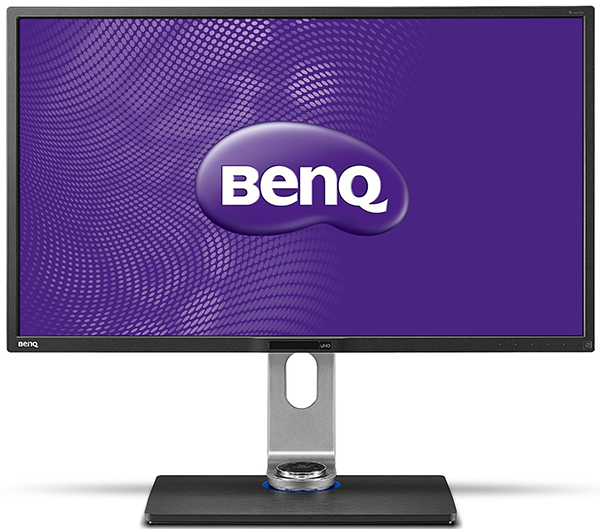Asus PA328Q ProArt 32-inch UHD Monitor Review
Asus has added a 32-inch Ultra HD display to its ProArt series. The PA328Q sports a super-sharp IPS panel and a precise factory calibration. Today we test it in our labs.
Why you can trust Tom's Hardware
Brightness & Contrast
To read about our monitor tests in-depth, please check out Display Testing Explained: How We Test Monitors and TVs. Brightness and Contrast testing is covered on page two.
Uncalibrated – Maximum Backlight Level
Today’s comparison group is all Ultra HD models with screens using VA, TN, IGZO and IPS technologies. From NEC we have the EA275UHD and PA322UHD. BenQ is represented by the BL3201PT. Acer’s G-Sync gaming screen is here as well, the XB280HK. And representing Philips is the 40-inch BDM4065UC.
Ultra HD monitors are not known for their high brightness unless you’re looking at one of the 27-inch IPS models. Of the 32-inch screens we’ve tested the PA328Q comes out on top when the backlight is maxed.
Unfortunately the PA328Q’s black levels are not as impressive. The VA-based Philips BDM4065UC is not likely to be bested anytime soon but if you’re looking at IPS panels, the NEC PA322UHD is the current leader.
We’d call this a fair contrast result. 1000:1 is our benchmark and both NEC screens top that figure. The rest of the pack lags a bit at around 800:1. We do like the PA328Q’s clarity but it doesn’t quite have the image depth of the other displays here.
Uncalibrated – Minimum Backlight Level
Turning down the brightness control to zero yields a perfect (in our opinion) 50-nit result. If you prefer a different max output level please refer to our settings on the previous page.
The PA328Q’s retains its fifth-place finish in the minimum black level test. This at least bodes well for its contrast consistency at all backlight settings.
Get Tom's Hardware's best news and in-depth reviews, straight to your inbox.
The difference in contrast between maximum and minimum backlight settings is pretty much non-existent. Asus is using a good-quality panel in the PA328Q.
After Calibration to 200cd/m2
After calibration we took measurements with the Uniformity Compensation on and off. Unlike the system we’re used to from NEC, Asus locks brightness when it’s engaged.
We have yet to see a uniformity compensation option that doesn’t raise the black level but that’s inherent to the technology. To fix hotspots in a black field the only option is to raise the brightness of the darker areas. The only possible result is an increase in black level.
Even though you get a tad more brightness with uni-comp on, the rise in black level reduces on/off contrast by 32 percent. The question then becomes, is it worth it? On our particular sample the answer is no and you’ll find out why in our uniformity tests on page seven.
ANSI Contrast Ratio
ANSI contrast stays pretty close to the sequential value which demonstrates good panel quality. Uniformity Compensation reduces that figure by 27 percent. It would seem that among 32-inch UHD monitors that IGZO technology provides a little more contrast but at a higher price.
Current page: Brightness & Contrast
Prev Page OSD Setup & Calibration Next Page Grayscale Tracking & Gamma Response
Christian Eberle is a Contributing Editor for Tom's Hardware US. He's a veteran reviewer of A/V equipment, specializing in monitors. Christian began his obsession with tech when he built his first PC in 1991, a 286 running DOS 3.0 at a blazing 12MHz. In 2006, he undertook training from the Imaging Science Foundation in video calibration and testing and thus started a passion for precise imaging that persists to this day. He is also a professional musician with a degree from the New England Conservatory as a classical bassoonist which he used to good effect as a performer with the West Point Army Band from 1987 to 2013. He enjoys watching movies and listening to high-end audio in his custom-built home theater and can be seen riding trails near his home on a race-ready ICE VTX recumbent trike. Christian enjoys the endless summer in Florida where he lives with his wife and Chihuahua and plays with orchestras around the state.
-
picture_perfect Oh my. I'd use this one as a nice digital picture frame. Not gaming because 1080p 144hz gets you much less lag, persistence blur and stutter. These resolutions are really too high for decent gaming.Reply -
JamesSneed This isn't a gaming monitor. It inst very high priced for a professional grade 32 inch monitor with 100% sRGB.Reply -
jasonelmore i use pro-arts as gaming monitors.. the PA 248Q is what i roll withReply
I would have seriously considered this monitor for gaming and creative work, but the lack of adobe RGB on a $1300 monitor kills the deal. -
Pibee If you're going to review a PA Professional grade monitor whose advertizing and promotional claims touts 100% Adobe RGB I would think you would have underscored the fact that it only achieves sRGB as a major issue. Instead you've glossed over it and reviewed the monitor as though such claims were never made and or never existed. Doesn't it say on the box 100% Adobe RGB? And yet nothing about it is mentioned. Not much of a review then is it.Reply
http://www.tomshardware.com/news/asus-proart-pa329q-uhd-display,29225.html
http://pcdiy.asus.com/2015/06/asus-pa329q-new-professional-4k-monitor-for-image-enthusiasts-editors/
https://www.asus.com/ca-en/Monitors/PA329Q/
-
mosc What's all the fuss about 100% coverage of adobe RGB?Reply
"If you need a 32-inch UHD monitor with a wide gamut only the NEC PA322UHD and the Dell UP3214Q have it."... and they cost twice as much.
Can you find a 32" 4K monitor for less money that covers more? No. OK then what's your criticism?











